Have you ever found yourself lost in the vast universe of Yu-Gi-Oh? With multiple series, movies, and spin-offs spanning over two decades, it’s easy to get confused about where to start or how everything connects. Whether you’re a returning fan looking to catch up or a newcomer curious about this iconic franchise, this comprehensive guide will walk you through the entire Yu-Gi-Oh series in chronological order.
As a lifelong fan who’s followed the journey from Yugi Muto’s first duel to the latest innovations in Rush Duels, I’m excited to share this detailed roadmap through one of anime’s most enduring franchises. Let’s dive into the world where card games determine the fate of the universe!
The Origins of Yu-Gi-Oh
Before we jump into the anime series, it’s worth understanding where it all began. Yu-Gi-Oh was created by manga artist Kazuki Takahashi in 1996. The original manga initially focused on various games and “Shadow Games” where losers faced supernatural punishment. However, the card game “Duel Monsters” quickly became the central focus due to its popularity with readers.
The name “Yu-Gi-Oh” itself is significant – in Japanese, “Yugi” means “game,” and the title roughly translates to “King of Games.” This theme of gaming mastery runs throughout the franchise, with each protagonist sharing the “Yu” kanji (遊) in their name, symbolizing their connection to gameplay and the original hero.
Yu-Gi-Oh Original Series (1998)
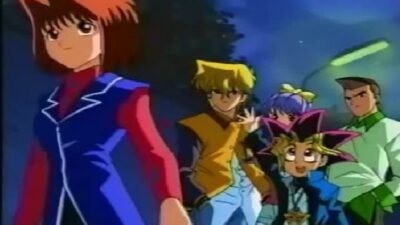
The first anime adaptation of Yu-Gi-Oh aired in 1998, produced by Toei Animation. This series is often overlooked by Western fans as it was never officially dubbed or widely distributed outside Japan. Unlike later adaptations, this version covers the early manga chapters where Yugi and his alter ego (referred to as “Dark Yugi”) participate in various games beyond just Duel Monsters.
This series introduces us to Yugi Muto, a shy high school student who solves the ancient Millennium Puzzle, unleashing the spirit of an ancient Egyptian Pharaoh. When Yugi or his friends are threatened, this spirit takes over Yugi’s body and challenges wrongdoers to Shadow Games.
The original series consists of 27 episodes and provides valuable context for character relationships and the early development of what would later become the main storyline.
Yu-Gi-Oh! Duel Monsters (2000-2006)
This is the series most fans recognize as the “original” Yu-Gi-Oh. Produced by Studio Gallop, Yu-Gi-Oh! Duel Monsters begins at chapter 60 of the manga, focusing almost exclusively on the Duel Monsters card game. This series spans 224 episodes across five seasons and forms the foundation of the franchise as we know it today.
Season 1: Duelist Kingdom Arc
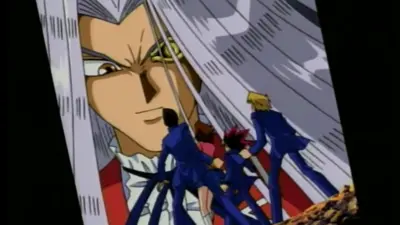
The series begins with Yugi facing his rival, Seto Kaiba, in a duel. After defeating Kaiba, Yugi is approached by Maximillion Pegasus, the creator of Duel Monsters, who uses his Millennium Eye to steal the soul of Yugi’s grandfather. To save him, Yugi must enter Pegasus’s tournament on Duelist Kingdom island.
Joined by his friends Joey Wheeler (Katsuya Jonouchi), Tristan Taylor (Hiroto Honda), and Téa Gardner (Anzu Mazaki), Yugi navigates the tournament while facing formidable opponents. This season establishes the core mechanics of Duel Monsters and introduces many fan-favorite characters.
Season 2: Battle City Arc
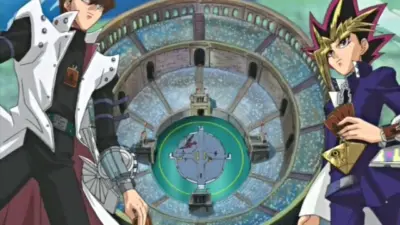
Yugi learns that the spirit within him is a nameless Pharaoh from ancient Egypt who has lost his memories. To uncover the Pharaoh’s past, Yugi enters Kaiba’s Battle City tournament to collect the three Egyptian God Cards – powerful cards that hold the key to the Pharaoh’s identity.
This season introduces more complex card mechanics and expands the lore of the Millennium Items. We meet new characters like Marik Ishtar, who wields the Millennium Rod, and his sister Ishizu, who possesses the prophetic Millennium Necklace.
Season 3: Virtual World and Battle City Finals
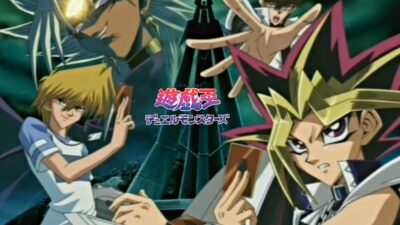
The first part of this season features an original story arc where Yugi and his friends get trapped in a virtual world created by Noah, the stepbrother of Seto and Mokuba Kaiba. After escaping, the Battle City Finals commence, culminating in epic duels involving the Egyptian God Cards.
Season 4: Waking the Dragons Arc
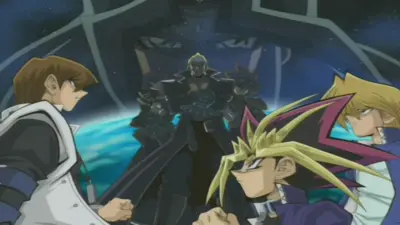
This season features an original storyline where Yugi, Joey, and Kaiba face the threat of the Orichalcos, an ancient evil that steals souls. They receive legendary dragons to combat this threat and must defeat the antagonists before they resurrect the great beast Leviathan.
Season 5: Grand Championship and Millennium World
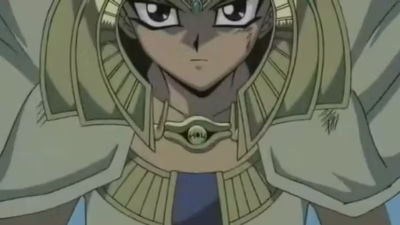
The final season consists of two arcs. The Grand Championship tournament is hosted by Kaiba, while the Millennium World arc finally reveals the Pharaoh’s past. The series concludes with a ceremonial duel between Yugi and the Pharaoh (now known as Atem), determining whether Atem will move on to the afterlife.
Yu-Gi-Oh! Movies
Yu-Gi-Oh! The Movie: Pyramid of Light (2004)
This film takes place between Seasons 3 and 4 of Duel Monsters (specifically after Episode 144). When Kaiba obtains the mysterious card “Pyramid of Light” to counter Yugi’s Egyptian God Cards, he unknowingly unleashes an ancient evil connected to the Pharaoh’s past.
Yu-Gi-Oh! Dark Side of Dimensions (2016)
Set six months after the original series ends, this movie serves as a proper finale to Yugi’s story. It features the return of Seto Kaiba, who is determined to bring back the Pharaoh for one final duel, and introduces a new villain connected to the Millennium Items.
Yu-Gi-Oh! Capsule Monsters
This twelve-episode miniseries is considered a side story to the main series. It follows Yugi and his friends as they’re transported to a world where Duel Monsters come to life. While not essential to the main plot, it offers additional adventures with the original cast.
Yu-Gi-Oh! GX (2004-2008)
Set several years after Duel Monsters, GX follows Jaden Yuki (Judai Yuki), a talented young duelist attending Duel Academy, a school founded by Seto Kaiba to train the next generation of duelists.
GX introduces new card mechanics, focusing heavily on Fusion Summoning. The series has a lighter tone initially but gradually becomes darker, especially in its later seasons. Jaden’s character undergoes significant development, transforming from a carefree student to a more complex character dealing with the responsibilities of his power.
The series consists of 180 episodes and explores themes of friendship, responsibility, and the consequences of power. It maintains loose connections to the original series, with occasional references to Yugi and other original characters.
Yu-Gi-Oh! 5D’s (2008-2011)
Set in a dystopian future, 5D’s follows Yusei Fudo, a skilled duelist from the impoverished Satellite district of New Domino City. This series introduces Turbo Duels, where players duel while riding motorcycles called Duel Runners.
5D’s has a more mature tone than previous series and introduces Synchro Summoning, a new mechanic that involves tuner monsters. The plot revolves around the Signers, individuals marked with the Crimson Dragon’s symbols who must prevent the resurrection of the evil Earthbound Immortals.
The series consists of 154 episodes and is noted for its complex storylines and character development. Yusei’s journey from an outcast in Satellite to a hero who unites New Domino City and Satellite represents one of the most compelling character arcs in the franchise.
Yu-Gi-Oh! Bonds Beyond Time (2010)
This crossover film brings together Yugi Muto, Jaden Yuki, and Yusei Fudo to face a time-traveling villain named Paradox who threatens to destroy Duel Monsters history. The movie connects the first three series and confirms they exist in the same timeline.
For optimal viewing, this film should be watched after episode 80 of 5D’s, as it takes place during that period in Yusei’s timeline.
The Separate Timeline Series
The following series exist in separate continuities from the original timeline:
Yu-Gi-Oh! Zexal (2011-2012) and Zexal II (2012-2014)
Zexal follows Yuma Tsukumo, a young duelist who meets Astral, a mysterious entity from another dimension. Together, they collect “Number Cards” to restore Astral’s memory. This series introduces Xyz Summoning, which allows players to overlay monsters of the same level to summon powerful Xyz monsters.
Zexal consists of 73 episodes, while its direct continuation, Zexal II, adds another 73 episodes. The complete story spans 146 episodes and features Yuma’s growth from an amateur duelist to a skilled champion.
| Season | Episodes | Release Date |
|---|---|---|
| Zexal Season 1 | 25 | April 11, 2011 |
| Zexal Season 2 | 24 | October 10, 2011 |
| Zexal Season 3 | 24 | April 9, 2012 |
| Zexal II Season 1 | 25 | October 7, 2012 |
| Zexal II Season 2 | 25 | April 14, 2013 |
| Zexal II Season 3 | 23 | October 6, 2013 |
Yu-Gi-Oh! Arc-V (2014-2017)
Arc-V introduces Yuya Sakaki, a young entertainer who discovers Pendulum Summoning, a new mechanic that allows for multiple monster summons simultaneously. The series explores a multiverse concept with four dimensions, each specializing in different summoning methods.
With 148 episodes, Arc-V has one of the most ambitious storylines in the franchise, incorporating elements from previous series while establishing its own unique narrative.
Yu-Gi-Oh! VRAINS (2017-2019)
VRAINS follows Yusaku Fujiki, who duels under the alias “Playmaker” in a virtual reality network called LINK VRAINS. As a child, Yusaku was kidnapped and forced to participate in the Hanoi Project, where he was subjected to traumatic dueling experiments.
This series introduces Link Summoning and explores themes of artificial intelligence and cybersecurity. With 120 episodes, VRAINS presents a more technologically focused narrative that reflects contemporary concerns about virtual identity and data privacy.
Yu-Gi-Oh! Sevens (2020-2022)
Sevens represents a significant shift in the franchise, featuring younger protagonists and a new animation style. The series follows Yuga Ohdo, an elementary school student who invents a new format called Rush Duels to make the game more accessible and fun.
With 92 episodes, Sevens targets a younger audience while still maintaining the core themes of friendship and growth through dueling.
Yu-Gi-Oh! Go Rush!! (2022-Present)
The most recent addition to the franchise, Go Rush!! continues the story established in Sevens, following new characters in the world of Rush Duels. This series further expands the universe created in Sevens while introducing its own unique elements.
The Evolution of Yu-Gi-Oh Card Game Mechanics
One of the most fascinating aspects of the Yu-Gi-Oh franchise is how each new series introduces innovative summoning mechanics that revolutionize the card game. Here’s how these mechanics evolved throughout the series:
| Series | Summoning Mechanic | Description |
|---|---|---|
| Duel Monsters | Fusion Summoning | Combines specific monsters using Polymerization |
| GX | Advanced Fusion | Expanded Fusion mechanics with new Fusion cards |
| 5D’s | Synchro Summoning | Combines Tuner + non-Tuner monsters of specific levels |
| Zexal | Xyz Summoning | Overlays monsters of the same level |
| Arc-V | Pendulum Summoning | Places monsters in Pendulum Zones to summon multiple monsters |
| VRAINS | Link Summoning | Uses Link Materials to summon monsters with directional arrows |
| Sevens | Rush Duels | Allows unlimited normal summons and continuous hand replenishment |
Each of these mechanics has added new dimensions to the game, keeping it fresh and engaging for players while providing unique storytelling opportunities in the anime.
Key Characters Across the Franchise
The Yu-Gi-Oh franchise features numerous memorable protagonists, each with their unique personalities and growth arcs:

Yugi Muto/Atem – The original protagonist who grows from a timid boy into a confident duelist. His journey of self-discovery and his relationship with the spirit of the Millennium Puzzle form the emotional core of the original series.
Seto Kaiba – Yugi’s arch-rival whose arrogance masks a complex character driven by his past. Throughout the series, his single-minded determination softens somewhat, and he eventually establishes Duel Academy to train future generations.
Joey Wheeler (Katsuya Jonouchi) – Yugi’s best friend who transforms from a street tough into a skilled duelist. His journey from amateur to finalist in major tournaments represents one of the most significant character developments in the series.
Jaden Yuki (Judai Yuki) – The carefree protagonist of GX whose cheerful demeanor hides a complex destiny. His character undergoes a dramatic transformation when he confronts the darkness within himself as the Supreme King.
Yusei Fudo – The stoic and mature protagonist of 5D’s who grew up in poverty and discrimination. His determination to help his friends and unite his divided city makes him one of the most admirable heroes in the franchise.
Yuma Tsukumo – The energetic and initially unskilled protagonist of Zexal who grows into a formidable duelist with the help of Astral. His journey represents the classic underdog story.
Yuya Sakaki – The entertainment duelist of Arc-V who believes dueling should bring smiles. His discovery of Pendulum Summoning and navigation of the dimensional conflict showcases his growth from a performer to a hero.
Yusaku Fujiki – The traumatized protagonist of VRAINS whose past with the Hanoi Project drives his quest for revenge. His character explores themes of trauma and healing through his interactions with AI companions.
Yuga Ohdo – The inventive fifth-grader of Sevens who creates Rush Duels to make the game more fun. His rebellion against restrictive rules represents the franchise’s return to its playful roots.
The Cultural Impact of Yu-Gi-Oh
The cultural footprint of Yu-Gi-Oh extends far beyond the anime and manga. The Yu-Gi-Oh Trading Card Game has sold over 35 billion cards worldwide as of 2021, surpassing even Pokémon’s 34 billion cards. This makes it one of the most successful trading card games in history.
The franchise has generated billions in revenue through various merchandise, video games, and organized play. Yu-Gi-Oh tournaments attract thousands of participants globally, with professional players competing for substantial prizes.
As one of the “big three” trading card games alongside Magic: The Gathering and Pokémon, Yu-Gi-Oh has helped define the modern TCG landscape. Its influence extends to internet culture as well, with “Yu-Gi-Oh: The Abridged Series” launching the entire genre of anime abridged parodies in 2006.
Even Olympic athletes have shown their appreciation for the franchise, with track star Noah Lyles displaying Blue-Eyes White Dragon and Exodia cards before a race at the 2024 US Olympic trials.
Watch Order Recommendations
With so many series and movies, there are several approaches to experiencing the Yu-Gi-Oh franchise:
Chronological Order (Main Timeline)
- Yu-Gi-Oh (1998)
- Yu-Gi-Oh! Duel Monsters (Seasons 1-3)
- Yu-Gi-Oh! The Movie: Pyramid of Light
- Yu-Gi-Oh! Duel Monsters (Season 4 to Season 5, Episode 14)
- Yu-Gi-Oh! Capsule Monsters
- Yu-Gi-Oh! Duel Monsters (Season 5, Episode 15 to End)
- Yu-Gi-Oh! Dark Side of Dimensions
- Yu-Gi-Oh! GX
- Yu-Gi-Oh! 5D’s (Season 1)
- Yu-Gi-Oh! 5D’s: Evolving Duel! Stardust VS Red Daemon’s (OVA)
- Yu-Gi-Oh! 5D’s (Season 2 to Season 3, Episode 20)
- Yu-Gi-Oh! Bonds Beyond Time
- Yu-Gi-Oh! 5D’s (Season 3, Episode 21 to End)
Separate Timeline Series (Watch in any order after the main timeline)
- Yu-Gi-Oh! Zexal and Zexal II
- Yu-Gi-Oh! Arc-V
- Yu-Gi-Oh! VRAINS
- Yu-Gi-Oh! Sevens
- Yu-Gi-Oh! Go Rush!!
Essential-Only Approach for Newcomers
If you’re new to the franchise and want a streamlined experience:
- Yu-Gi-Oh! Duel Monsters
- Yu-Gi-Oh! Dark Side of Dimensions
- Choose any spin-off series based on your interest in its premise or art style
Conclusion
The Yu-Gi-Oh franchise represents one of the most successful media mix strategies in entertainment history, seamlessly blending anime, manga, and a physical card game into a cohesive universe that has captivated fans for generations. From Yugi’s first duel to the latest innovations in Rush Duels, the heart of Yu-Gi-Oh remains the same: friendship, growth, and the belief that games can bring people together.
Whether you’re drawn to the ancient Egyptian mysteries of the original series, the academic setting of GX, the dystopian future of 5D’s, or any of the other unique worlds within the franchise, there’s a Yu-Gi-Oh series waiting for you to discover. So shuffle your deck, draw your cards, and prepare to duel – the adventure is just beginning!
FAQs About Yu-Gi-Oh Series
1. Is it necessary to watch all series in order?
No, while the first three series (Duel Monsters, GX, and 5D’s) share a timeline, later series exist in separate continuities and can be enjoyed independently.
2. Which series is considered the best for beginners?
The original Yu-Gi-Oh! Duel Monsters remains the best starting point as it establishes the core concepts and has the most cultural recognition.
3. Are the movies canon to the main storyline?
“Pyramid of Light” fits between seasons of the original series, while “Dark Side of Dimensions” serves as an epilogue to Yugi’s story. “Bonds Beyond Time” connects the first three series but doesn’t significantly impact their individual plots.
4. How closely do the anime series follow the manga?
The original Yu-Gi-Oh! Duel Monsters begins from chapter 60 of the manga but makes various story changes. Later series are anime-original creations without direct manga counterparts.
5. Where can I legally watch all Yu-Gi-Oh series?
Various streaming platforms offer Yu-Gi-Oh series, with availability varying by region. Check services like Crunchyroll, Netflix, Hulu, and the official Yu-Gi-Oh YouTube channel for current offerings.



